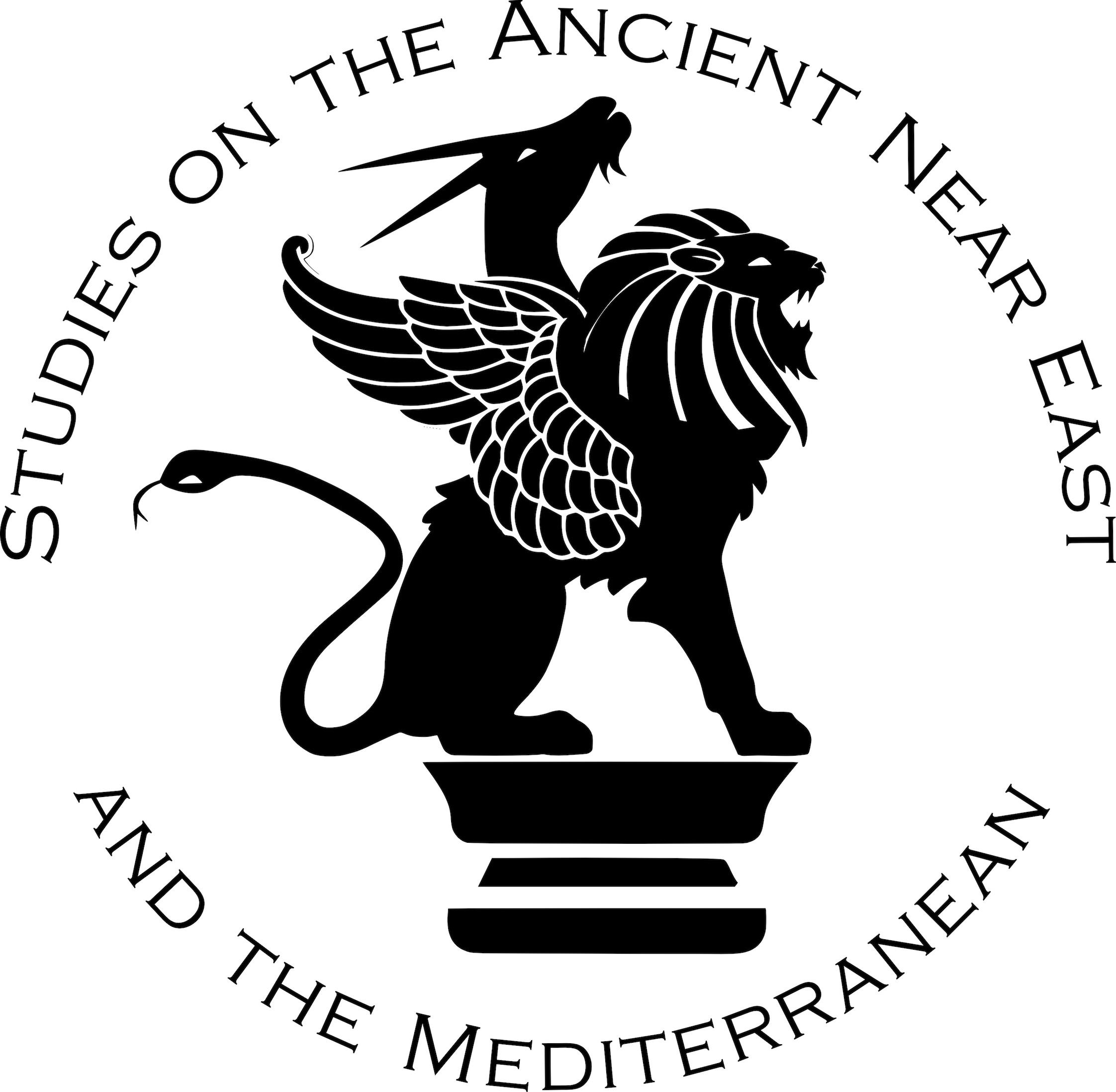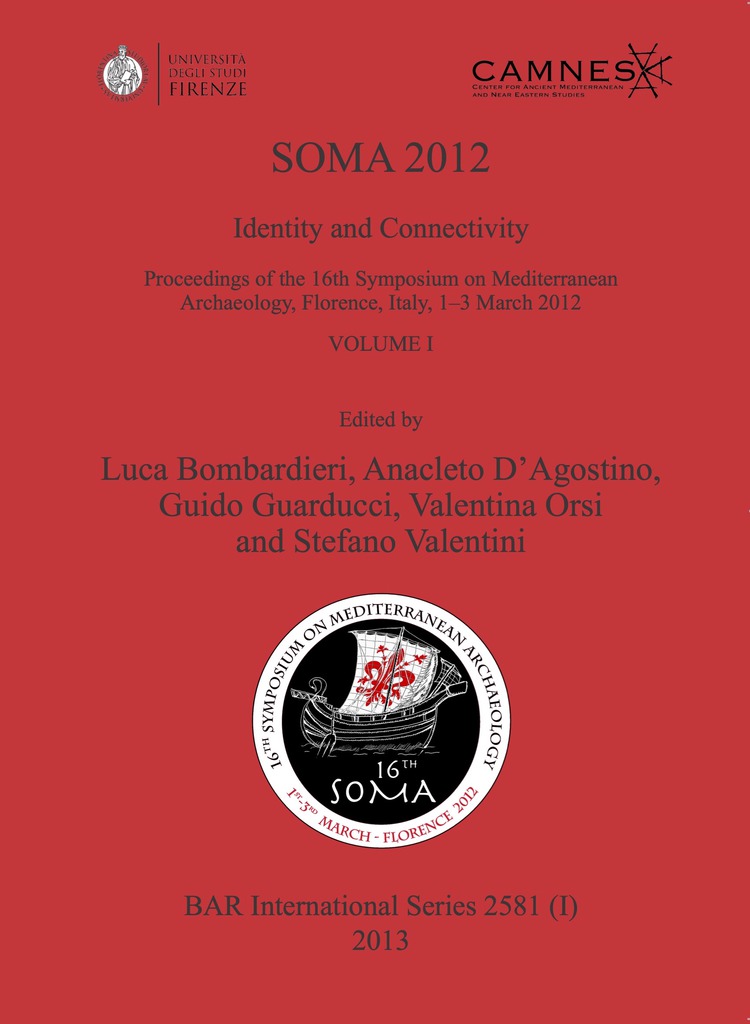SANEM 6
ARCHEOLOGIA IN TOSCANA:
Ricerca, Tutela, Gestione, Valorizzazione
Atti del Convegno di Firenze, 7-9 Giugno 2023
A cura di Stefano Valentini - Guido Guarducci - Valentina Santini
Arbor Sapientiae (Roma), 2024
A circa dieci anni di distanza dall’edizione del volume “Archeologia a Firenze: città e territorio”, CAMNES pubblica gli Atti del Convegno “Archeologia in Toscana”, tenutosi a Firenze nel giugno del 2023. Il volume si articola in sezioni tematiche che raccolgono i contributi presentati durante il convegno da archeologi, ricercatori e operatori del settore dei beni culturali, di tutte le Soprintendenze di Archeologia, Belle Arti e Paesaggio della Toscana, delle Università di Firenze, Siena, Pisa e Stranieri di Siena, della Direzione Regionale Musei, del CNR e della Direzione Beni, Istituzioni, Attività Culturali e Sport della Regione Toscana. I contributi, incentrati sulle diverse aree geografiche della Toscana, attraversano la storia di questa terra dalla Preistoria fino al Medioevo e restituiscono al lettore un quadro esauriente del lavoro svolto da ricercatori, archeologi e operatori
dei beni culturali, negli ultimi dieci anni, sui siti, i parchi ed i musei archeologici regionali. Un lavoro che sta lì a dimostrare che l’archeologia non è solamente quella delle grandi scoperte, ma soprattutto quella del lavoro quotidiano e paziente di tante figure attive sul campo, in tutte le fasi del “processo archeologico”.
INDICE
Introduzione
Archeologia per le Comunità
Papers
- Elisabetta Giorgi, Andrea Arrighetti, Alessandra Nardini, Laura Pagliantini, Nicoletta Volante – Archeologia con e per le comunità: per una concreta attuazione della Convenzione di Faro
- Simonetta Menchelli, Anna Anguissola, Francesca Anichini, Gabriele Gattiglia – Archeologia per le comunità. Alcune iniziative degli Archeologi ed Archeologhe dell’Università di Pisa
- Michele Nucciotti – Archeologia Pubblica e Archeologia Leggera a Firenze: mappare le trasformazioni urbane della ‘Città Profonda’
- Claudia Noferi – Co-progettazione, social media e mediazione di un patrimonio condiviso. Le aree archeologiche di Vetulonia, Roselle e Cosa tra collaborazioni consolidate e nuovi progetti
Posters
- Maddalena Chelini, Fabio Martini, Chiara De Marco, Manuela Fusi, Lucia Sarti – Archeologia sociale: esperienze di gestione per uno sviluppo educativo delle comunità
- Chiara De Marco, Maria Teresa Cuda, Fabio Martini, Giovanna Pizziolo, Lucia Sarti, Nicoletta Volante – "ABC-Archeologia Bene Comune”: una rete di musei toscani per la valorizzazione della Preistoria
Archeologia della Produzione
Papers
- Luisa Dallai, Giovanna Pizziolo, Nicoletta Volante, Andrea Zifferero – Risorse ed economie nei paesaggi minerari maremmani dalla Preistoria alla prima Età Moderna
- Claudia Sciuto, Cristiana Petrinelli Pannocchia, Alice Vassanelli, Jacopo Gennai, Elisabetta Starnini – Archeologia dei materiali lapidei tra Paleolitico e Contemporaneità nella Toscana nord-occidentale: produzione, riciclo e sostenibilità
Posters
- Cristiana Petrinelli Pannocchia, Alice Vassanelli, Antonio Borzatti de Loewenstern, Barbara Raimondi – Nuove ricerche, vecchie collezioni: gli ornamenti in steatite pre-protostorici della Toscana
- Alice Vassanelli – MARMO: i più antichi manufatti in marmo della Toscana
- Andrea Terziani, Cecilia Viti, Nicoletta Volante – Strategie di lavoro in una miniera di cinabro tardo neolitica. Dati preliminari sull’analisi tecno-funzionale e petrografica dei macrolithic tools di Poggio Spaccasasso (Alberese, GR)
Pubblico e Privato: tra Promozione e Collaborazione
Papers
- Antonio Alberti, M. Chiara Bettini, Claudia Rizzitelli, Alessandro Zanini – Un insediamento protostorico nella periferia di Pisa
- Chiara Lanari, Francesco Tapinassi, Maria Angela Turchetti, Giuseppe M. Della Fina, Gianluca Bambi – Il prodotto turistico omogeneo ‘Toscana Terra Etrusca’
- Neva Chiarenza – Una bottega tintoria rinascimentale nel Centro Storico di Lucca: esempio virtuoso di collaborazione fra pubblico e privato
- Susanna Sarti, Giada Fatucci – Novità da Cosa. L’archivio dell’American Academy in Rome racconta
Valorizzazione: dallo Scavo al Museo
Papers
- Chiara Valdambrini, Claudia Noferi, Valter Nunziatini, Linda Venturi, Daniele Visconti – Il Museo Archeologico e d’Arte della Maremma di Grosseto, Roselle ed il progetto GrITAccess del Programma Interregionale Italia-Francia Marittimo
- Silvia Guideri, Marta Coccoluto, Elena Pianea, Alessandro Bezzini, Valerio Tesi, Leonardo Bochicchio, Stefano Casciu, Maria Gatto – Il Parco Archeologico di Baratti e Populonia, il Museo di Piombino e l'Accordo MIC-RT-Comune di Piombino come best practice
- Giulia Picchi – Tutela e valorizzazione dei beni archeologici dalle cave di Carrara: problematiche e interventi realizzati
- Neva Chiarenza, Giulia Picchi – Dallo scavo al museo: studio, restauro e valorizzazione del sarcofago in piombo di Antraccoli, Lucca
- Francesca Condò, Maria Gatto – Gli Arretina vasa: una questione di branding. Il racconto della fortuna della terra sigillata aretina nelle sale rinnovate del Museo Archeologico Nazionale di Arezzo
- Arianna Vernillo, Annalena Brini, Gabriella Capecchi, Paolo Liverani, Pasquino Pallecchi, Anna Patera, Giovanni Rotondi, Monica Salvini – Dilacerata Signa: frammenti di statuaria romana in bronzo dai Renai di Signa. Dal recupero alla musealizzazione
Posters
- Angela Cardini, Maria Teresa Cuda, Claudio Mancianti, Massimo Marini, Nicoletta Volante – Interventi di valorizzazione nel Parco Archeologico Naturalistico di Belverde (Cetona, SI)
- Francesca Bertini, Arianna Vernillo – Gonfienti e il Museo archeologico presso la Rocca Strozzi a Campi Bisenzio. La lunga storia del popolamento nella piana
- Paolo Bruschetti, Pietro Matracchi, Ada Salvi – Le mura di Cortona, un patrimonio da riscoprire
- Andrea U. De Giorgi, Allison E. Smith, Matthew Brennan – Visualizzare Cosa. Dallo scavo alla realtà virtuale
- Antonino Meo – Pisa, complesso ex-Salesiani. Dallo scavo alla musealizzazione
Tra Ricerca e Archeologia Preventiva
Papers
- Michele Bueno, Ursula Wierer, Lorenzo Cecchini, Andrea Violetti, Ludovico Giannini, Giulia Gallerini, Francesco Cini, Agnese Pittari, Mauro Stefanelli – Scoperta e scavo di due pozzi antichi a Empoli e Montespertoli (FI). Metodi d’indagine e scelte strategiche a confronto
- Ada Salvi – Nuovi dati per Cortona: l’area di Camucia alla luce di alcune recenti indagini archeologiche
- Elena Sorge – L’Anfiteatro che non c’era. Scavo, restauro e valorizzazione
- Paolo Liverani, Caterina Grassi – Il Foro di Rusellae e il suo Augusteo
- Ilaria Romeo, Anna Maria Nardon – L’Edificio P e i suoi intonaci dipinti: nuove indagini a Cosa
- Lorella Alderighi – Il sito archeologico della Linguella a Portoferraio. Nuovi interventi di scavo, restauro e musealizzazione
Posters
- Sem Scaramucci, Adriana Moroni – Ricerche archeologiche sul geosito di La Pietra: il paesaggio della cava eneolitica
- Lisa Rosselli, Carmine De Mizio, Maria Vittoria Riccomini – I tumuli etruschi in località Le Colombaie a Volterra
- Ada Salvi, Federico Salzotti – Le fornaci etrusche di Piano Tondo a Castelnuovo Berardenga (SI)
- Alessia Contino, Lucilla D’Alessandro, Martina Rodinò – Cosa e i suoi materiali: produzioni locali e contatti mediterranei
- Alberto Caroti, Stefano Genovesi, Francesco Ghizzani, Germana Sorrentino, Fabio Fabiani – Pisa Progetto Suburbio: le domus romane di Piazza Andrea Del Sarto
- Domingo Belcari – Vada Volaterrana: i paesaggi costieri
- Silvia Marini, Paolo Sangriso – Vada Volaterrana. Il sistema portuale e la sua comunità
- Sabrina Bartali, Antonio Alberti, Alessandro Costantini, Elisabetta Neri – L'indagine archeologica dell’insediamento romani di Sant’Antonio (Comune di Montaione): strutture residenziali romane e tardo antiche
- Cristina Menghini – Fonti scomparse e pozzi ritrovati alle Due Porte (SI)
- Alberto Agresti, Guido Agresti, Marie Ange Causarano, Lorenzo Crescioli, Lucrezia Cuniglio, Gianfranco Morelli, Ursula Wierer – Le mura di pietra e di acqua: le fortificazioni della Badia di Settimo
- Alberto Agresti, Guido Agresti, Marie Ange Causarano, Lorenzo Crescioli, Lucrezia Cuniglio, Anna Floridia, Massimo Gavazzi, Sonia Mugnaini, Giovanni Roncaglia, Ursula Wierer – San Salvatore a Settimo, Scandicci (FI). La sala capitolare
- Cristina Ducci – Testimonianze archeologiche lungo la via del Bigallo, Bagno a Ripoli
- Ada Salvi, Alessio Mini – Lo scavo del Palatium della Rocca di Civitella in Val di Chiana (AR): dati preliminari e primi risultati
- Stefano Bertoldi – Nuovi dati ceramici da Siena (XVIII secolo). La bottega del Maestro di Fornace Antonio Ceccarelli
Il Mestiere e gli Strumenti della Tutela
Papers
- Michele Bueno, Pierluigi Giroldini, Valentina Leonini, Massimo Tarantini, Arianna Vernillo, Ursula Wierer – Il mestiere della tutela. L’attività archeologica delle Soprintendenze dopo un decennio di riforme: uno sguardo dalle province di Firenze, Pistoia e Prato
- Marcella Giorgio – Strumenti digitali per la tutela archeologica delle province di Pisa e Livorno: il GIS-ARCHEO
- Vittorio Mascelli, Paolo Baldi, Maurizio Martinelli, Paolo Giulierini, Marta Coccoluto – Il Portale Cultura della Regione Toscana e il patrimonio digitale etrusco
Posters
- Lucia Sarti, Fabio Martini – Archeologia preistorica in area fiorentina: un esempio di archeologia preventiva ante litteram. Complessità e potenzialità della gestione dei dati acquisiti per la ricostruzione storica di un territorio
- Monica Salvini – Il livello archeologico del Piano Strutturale del Comune di Firenze
- Andrea Arrighetti, Marco Repole – PROTECT: un progetto di archeosismologia per la città di Siena
- Jacopo Crezzini, Marco Giamello, Debora Caldarelli, Jacopo Bruttini – I pozzi di butto del centro storico di Siena: buone pratiche nel recupero e nello studio dei reperti
- Agnese Sagliuoccolo, Federico Cantini, Valentina Giuffra, Antonio Fornaciari – La “Pellegrina” di San Sisto, Pisa (secolo XII d.C.)
- Ada Salvi, Riccardo Bargiacchi, Dimitri Pizzuto, Chiara Marcotulli – Dalla torre al castello: il sito di Belfiore a Capolona (AR)
Luoghi Sacri
Papers
- Stefano Bertoldi, Stefano Campana, Alessandra Nardini, Marco Valenti, Nicoletta Volante – Percorsi e paesaggi sacri dai culti preistorici alla cristianità tardo medievale: nuovi dati e interpretazioni dal territorio senese
- Mattia Bischeri, Marco Pacifici – Novità sul regime delle offerte in lega metallica dalla vasca del Bagno Grande a San Casciano dei Bagni (SI)
Paesaggi e Insediamenti
Papers
- Enrico Conti, Ivan Martini, Adriana Moroni, Francesco Boschin, Vincenzo Spagnolo – Il promontorio dell’Argentario nel Paleolitico medio. Come geomatica, geologia e archeologia possono ricostruire i paesaggi del passato
- Giovanna Bianchi, Franco Cambi, Stefano Campana, Stefano Camporeale, Elisabetta Giorgi, Cynthia Mascione, Luca Passalacqua, Laura Pagliantini, Rossella Pansini, Giovanna Pizziolo, Edoardo Vanni, Nicoletta Volante, Andrea Zifferero – Paesaggi insediativi e di potere tra Maremma e Arcipelago Toscano nella lunga durata: continuità, discontinuità, resilienze, nuove prospettive
Poster
- Fabio Martini, Lapo Baglioni, Patrizio Balli, Chiara De Marco, Manuela Fusi, Isabella Matera, Gaia Mustone, Pasquino Pallecchi, Matteo Penco, Lucia Pasquariello, Lucia Sarti – Il popolamento preistorico tra area fiorentina e Mugello: nuovi dati
Florentia e il suo Ager
Papers
- Giorgio F. Pocobelli – La centuriazione ad est di Firenze: nuovi spunti di ricerca dalle immagini aeree
- Pierluigi Giroldini, Erika Albertini, Carlotta Bigagli, Federica Mennuti, Alessandro Palchetti, Rosalba Settesoldi – Dinamiche di occupazione di un settore dell’agro centuriato di Florentia alla luce delle ricerche presso il Viola Park (Bagno a Ripoli, FI)
- Giovanna Liberotti – Eredità Culturali: l’acquedotto romano di Florentia e la viabilità


 Pubblicato da:
Pubblicato da:


 Pubblicato da:
Pubblicato da:


